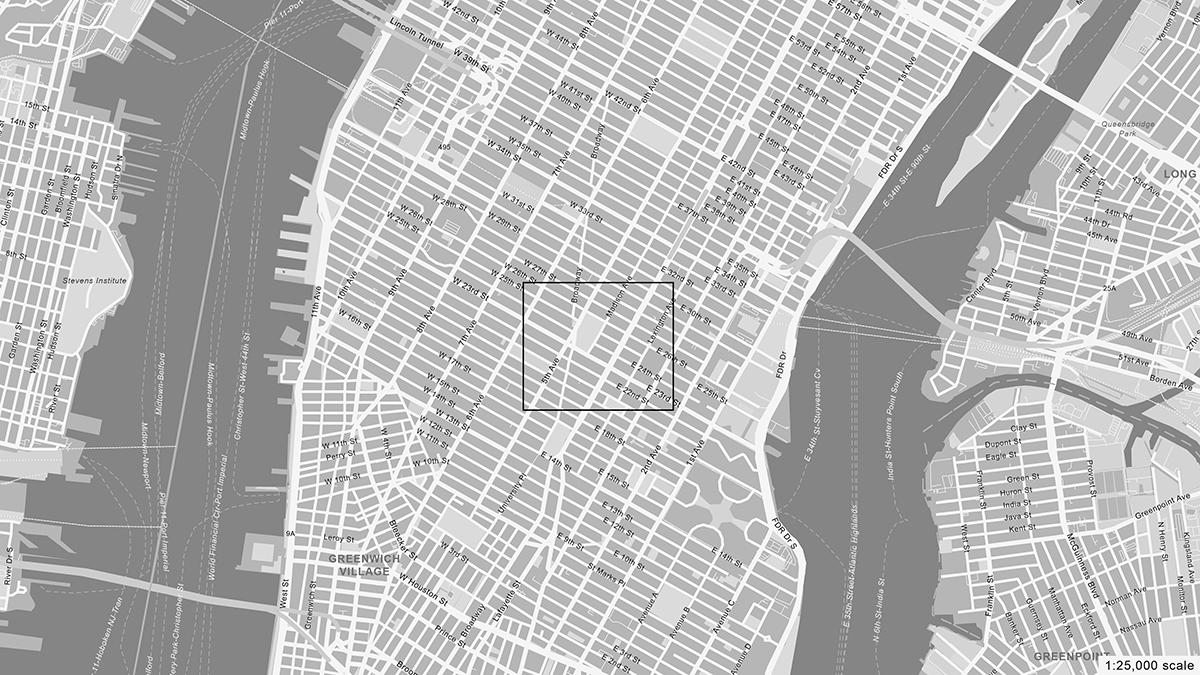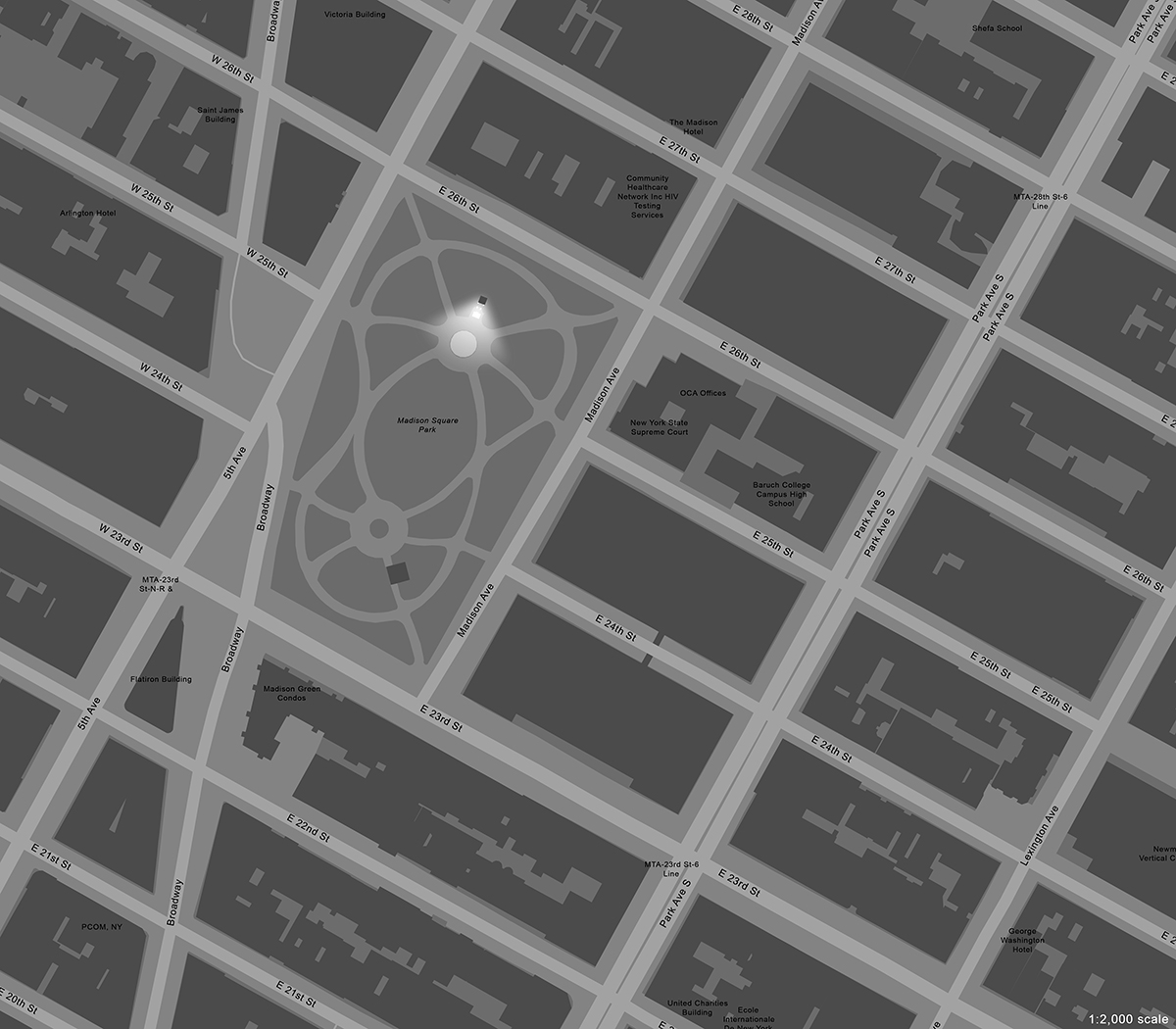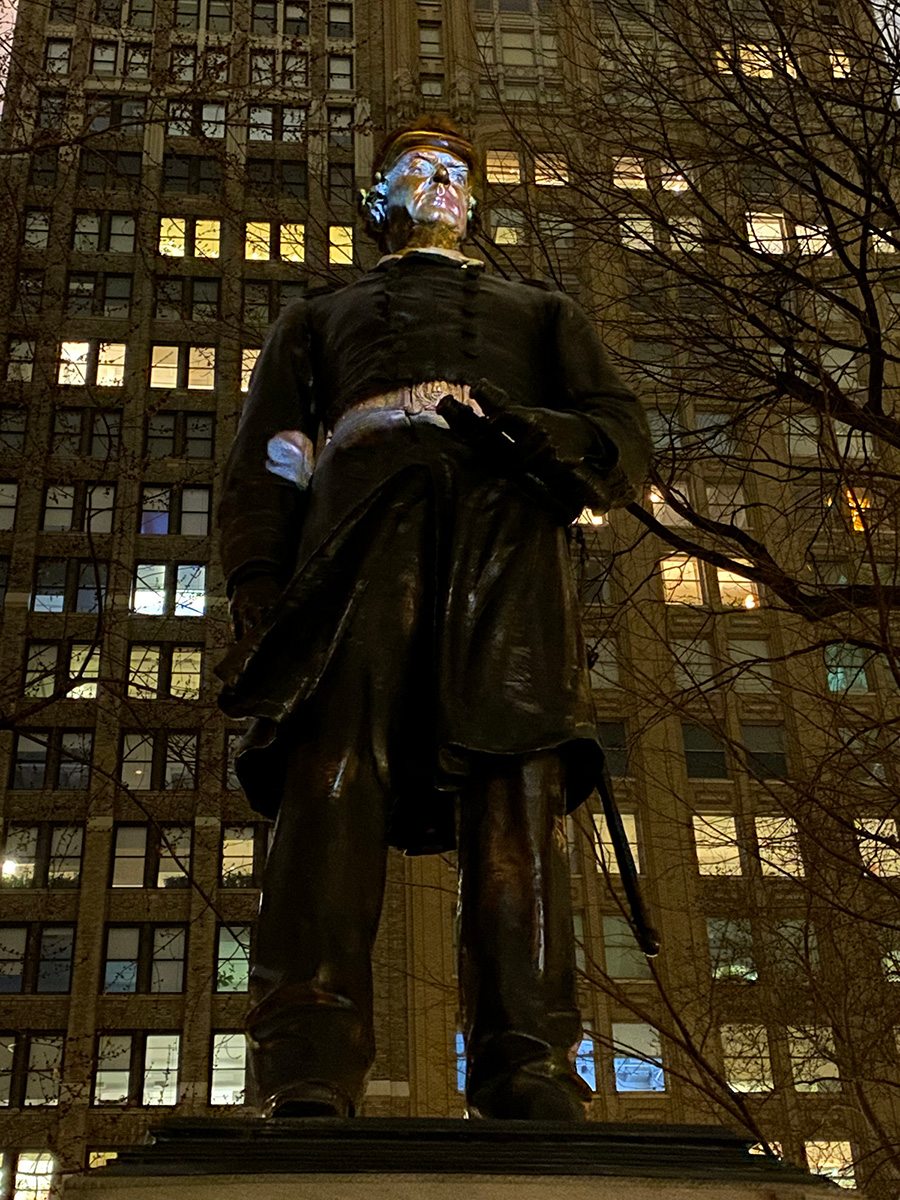Interrogative Design: Selected Works of Krzysztof Wodiczko – The Admiral Farragut Monument Projection
For the duration of the Interrogative Design exhibition, we will be providing expanded online content to give viewers a deeper access to selected projects. Materials for this exhibit provided by the artist, with unique edits specially produced for this project by GSD Exhibitions.
The Admiral Farragut Monument Projection, “Monument”, Madison Square Park, 2020, New York
• 11 Madison Avenue, New York, New York 10010
• Madison Square Park Conservancy
• Run dates: January 16–May 10, 2020
Bounded by the intersection of Broadway and 5th Avenue, where the Flatiron Building is located, Madison Square Park runs three city blocks, from 23rd to 26th Street. Inside the park, pathways form two intersecting circles linked by an oval, and at the northern edge of the park is the 1881 monument to Admiral David Glasgow Farragut, lauded in his day as a Union naval hero during the Civil War. This monument is considered to be one of the most historically significant sculptures in New York City, with Admiral Farragut depicted as if standing on a ship’s prow, posing victoriously in full naval regalia. For this public projection, Krzysztof Wodiczko collaborated with twelve refugees who had been resettled in the United States; their filmed likenesses and spoken narratives were superimposed on the statue of Admiral Farragut.
Wodiczko was supported by the Madison Square Park Conservancy, and together they partnered with the Refugee Council USA (RCUSA), a coalition of humanitarian organizations including the International Rescue Committee and the Integrated Refugee & Immigration Services (IRIS). Through RCUSA and IRIS, the Conservancy invited individuals to connect directly with Wodiczko through a series of conversations, a process of immersion that allowed the artist to understand each person’s story, conditions in their home country, and their unique processes of immigration to the contemporary United States context.
Pertinent to this project is current scholarship documenting how the American Civil War drove millions—soldiers, civilians, stragglers, enslaved Africans, free people, Northerners and Southerners—from their homes, generating a 19th-century refugee crisis. Similarly, each filmed participant’s home country had suffered the devastation of civil war, and most participants had spent years in refugee camps. This prompted Wodiczko to choose the Farragut statue location as site for his intervention, and to compare how select individuals are lionized in wartime while others are overlooked. Wrapped in video footage of people from Africa, Central America, South Asia, and the Middle East, the bronze monument emerges as a surrogate for refugees whose diverse plights, harrowing journeys, grueling fortitude, and quest for democracy brought them to the United States.


